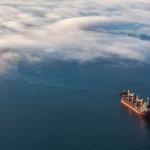PANAJI: A recently discovered underwater landslide in the Krishna-Godavari basin, located between 950 meters and 1.1 kilometers below the ocean’s surface, could pose a serious threat to underwater structures and coastal regions, scientists from the Goa-based National Institute of Oceanography (NIO) have warned.
“The massive landslide has the potential to displace a significant amount of water and seabed sediments, which could lead to a tsunami,” said Sunil Kumar Singh, Director of NIO, in an interview.
The landslide, located in the Bay of Bengal, is believed to have occurred sometime between 2009 and 2015. According to NIO, the event could have serious implications for underwater communication cables, oil rigs, and coastal populations.
The landslide resulted in the collapse of a large section of the seabed, moving an estimated 11 cubic kilometers of sediments—enough to fill about 4.4 million Olympic-size swimming pools. In some areas, the deposits from the landslide are up to 60 meters thick. This enormous underwater event, known as a mass transport deposit (MTD), has created a fan-shaped deposit on the ocean floor that spans an area of approximately 70 square kilometers—roughly the size of 10,000 football fields.
The landslide was identified using advanced equipment that tracks changes in the ocean floor over time. According to NIO, this is one of the largest underwater slope failures ever discovered in the region.
Scientists suggest several factors may have triggered the landslide. One key possibility is Cyclone Helen, a category-1 storm that hit the region in November 2013. The cyclone’s intense winds and powerful waves may have destabilized the seabed. Other contributing factors could include extreme flooding events in 2010 and 2013, as well as a 6-magnitude earthquake in May 2014 in the Bay of Bengal.
NIO researchers stress that even seemingly minor events like cyclones, heavy rainfall, and earthquakes can trigger massive underwater landslides, especially if the ocean floor sediments have already been weakened by prior disturbances.
Given the potential risks posed by this discovery, scientists are calling for increased research and monitoring of the Krishna-Godavari basin and similar regions to better understand and predict underwater hazards.





